- Home
- Tom Clancy
Fighter Wing: A Guided Tour of an Air Force Combat Wing Page 21
Fighter Wing: A Guided Tour of an Air Force Combat Wing Read online
Page 21
Just aft of the seeker guidance section is the AMRAAM’s armament section, which contains the warhead and target-detection device. The warhead is an ABF-type warhead built by Chamberlain Manufacturing which weighs in at a hefty 50.6 lb./23 kg., using a ring of contact plus/laser proximity fuses, just like the AIM-9M. While not as powerful as the big warhead on the AIM- 7M, it can down virtually any aircraft in the world today.
Just behind the armament package, and taking up fully half the AIM- 120’s length, is the single-grain, ducted rocket motor built by Hercules. It is a fine compromise between a fast-burning, high-impulse motor and one which burns with lower thrust for a longer time. What makes this possible is the small size and low aerodynamic drag of the AIM-120 airframe. The missile rapidly accelerates to about Mach 4 (plus the speed of the launch aircraft), and can sustain this with an intelligent autopilot designed to conserve the vital “smash” energy that creates the no-escape zone. The result is a missile with the ability to virtually guarantee a kill against an approaching head-on target out to something like 40 nm./73.2 km. In a “tail chase” engagement, which requires the missile to overtake the target, this range drops to probably around 12 nm./21.9 km. These numbers should be considered approximate, because DoD is very sensitive about the precise no-escape range at various points of the AMRAAM envelope. At the rear of the missile are the maneuvering fins. Hughes found that rear-mounted maneuvering fins enhance the ability to turn rapidly during the terminal endgame.
So how do you launch an AMRAAM missile shot? If you are flying an F-16C, you select an air-to-air mode for the radar such as BORE (Boresight—i.e., where the radar is sighted down the centerline of the aircraft) or TWS, DOGFIGHT (where the radar is in a mode useful for close-in dogfighting). Then you thumb the missile selection switch on the control stick for AIM- 120, and select either SLAVE or BORE to program the missile radar to accept commands from the F-16’s onboard APG-68 radar. The SLAVE option locks the missile seeker onto whatever target the aircraft’s radar is currently tracking, while BORE simply points the aircraft’s radar straight ahead along your line of flight—the first target it sees will be locked. Once a radar contact is established, the onboard weapons computer establishes a fire control solution, including elapsed time from missile launch until the AMRAAM’s radar goes active. At this point, the F-16’s Heads-Up Display will begin to give you steering cues to bring the aircraft into range to fire. Once the HUD gives you an IN RANGE indicator, you press the weapons release (“pickle” switch) on the control stick. At this point, the missile is launched and will accept updates from the radar (if you have selected a FIRE AND UPDATE mode) until either you break radar contact from maneuvering or the missile hits the target. At this point, you are ready to either select another target or evade. Total time for the engagement? Well, on my first try in the F-16 simulator at Lockheed’s Fort Worth Plant, I was able to do it in about eight seconds. It is that simple, just like playing the computer game Falcon.
So, what is the future for AMRAAM? For starters, there are exports. Great Britain, Norway, Sweden, and Germany have already become customers for the AIM-120. Additional nations will certainly be added to this list. New versions of the missile are on the drawing board, getting ready for test and production. The most important of these will be the AIM-120C, designed for internal carriage on the Lockheed F-22A stealth fighter, which will enter service early in the 21st century. This new version of the AIM-120, with smaller control surfaces and a much smaller stowage profile, will give the F-22 lethal air-to-air firepower without compromising its ultra-smooth low-observable profile. AMRAAM is really a flying computer with a big bang attached. With continuous software improvements, it will be a corner-stone of the U.S. AAM arsenal well into the middle of the 21st century.
FUTURE DEVELOPMENTS: THE AIM-9X
Once upon a time in the 1980s, there was a master plan for future U.S. AAM development. This plan included the introduction of AMRAAM, as well as the replacement of both the AIM-9L/M Sidewinder and the AIM-54 Phoenix. Unfortunately, with Congressional restrictions and budget cuts, the end of the Cold War, and some badly managed programs, this master plan fell apart before it could be implemented. The AIM-54 replacement, known as the Advanced Air-to-Air Missile (AAAM), was stillborn when the requirement died with the Soviet Union in the late 1980s. But the most painful loss for fighter crews was the Sidewinder replacement.
Originally, the AIM-9’s successor was to be a European-built system known as the AIM-132 Advanced Short Range Air-to-Air Missile (ASRAAM), built by a consortium of British Aerospace and Bodenseewerk Gerätechnik (BTG) of Germany. Under a multi-national Memorandum of Understanding (MOU) signed in 1981 by the United States and a number of NATO nations, all agreed to adopt AMRAAM and ASRAAM as their standard AAMs. Unfortunately, the United States and Germany dropped out of the program. While the AIM-132 has continued development, and will go into service with the Royal Air Force in the late 90s, the result was disarray in Western AAM procurement.
Today the next generation of American short-range AAMs is being conceived in the halls of the Pentagon and the engineering design shops of Hughes and Raytheon. The missile is tentatively called the AIM-9X, and if it goes into production, it should put the United States back into the game of short-range dogfighting in the 21st century. In January 1995, Hughes Missile Systems and Raytheon Corporation won a competition to develop separate proposals for the new model of Sidewinder. Final selection of a prime contractor will happen in 1996, with service introduction sometime in the early years of the 21st century. While the exact configurations that the two contract teams will submit to the AIM-9X JPO are proprietary, there are probably many common features. These include:• Seeker—The seeker will probably be a staring (constantly viewing the target) IIR array with many detector-array elements, each one sensitive enough to track a target at all aspects. It will be backed up by an advanced signal processor, designed to actually look for the signature of a particular aircraft configuration (such as a Mirage 2000 or a MiG- 29), providing it with a basic NCTR function. Also, it will be capable of tracking targets from a high “off-boresight” mode (the ability to lock up a target well off the launch aircraft’s centerline—maybe more than 60°—and then fly directly off the launch rail to a hit).
• Helmet-Mounted Sight (HMS)—The Navy and Air Force have finally accepted the inevitability of the HMS as the visual sighting system for future manned combat aircraft. The big advance planned for the U.S. HMS will be that HUD symbology will be superimposed on the sight glass, directly in front of the user’s right eye. Studies indicate that this will provide a two-to-four-second improvement in overall reaction time to launch an AIM-9X, and will also make AMRAAM shots more rapid and accurate.
• Warhead—The current generation of ABF warheads, while quite adequate for killing a MiG-23 Flogger or MiG-25 Foxbat, may not perform as well against newer Russian and Western designs. These blast-fragmentation warheads were designed to perforate the target’s fuel tanks, igniting catastrophic fires on any plane not equipped with self-sealing fuel tanks and fire suppression systems. Plans are afoot to design warheads that specifically target other aircraft systems like the engines or the crew. This will keep the AIM-9X a highly lethal contender in the endless contest between the warhead engineers and the “vulnerability engineers” who design aircraft protective systems for use well into the middle of the 21st century.
• Propulsion/Guidance—For the first time in a Western AAM, the AIM-9X will utilize an active thrust vectoring propulsion system, which will radically improve maneuverability. It appears that whatever design team wins the competition, the winner will make use of a Raytheon-designed and -developed fin control system known as Box Office. Composed of four tail-mounted maneuvering fins (there are no mid-body guidance fins as in AMRAAM), Box Office will make 60-G maneuvers possible for the first time on a U.S. AAM.
When all these components are integrated and the inevitable software bugs are eventually tracked down and stamped out,
the AIM-9X will carry the proud Sidewinder tradition into a new century. With the will, the money, and an efficient management team, Dr. McLean’s vision of an agile, lightweight, intelligent, and deadly missile will take to the skies on wings he could never have imagined back in that desert garage lab. Let’s hope it works out; for without it, tomorrow’s U.S. fighter pilots could be outgunned as well as outnumbered by systems made elsewhere.
AIR-TO-GROUND ORDNANCE
On the third day of the Persian Gulf War in 1991, General Charles A. Horner held a press conference in Riyadh, Saudi Arabia, to discuss how things were going. Known as the “four o’clock follies,” these daily briefings were rather dull until General Horner started showing gun camera film (videotape, actually) from the various strikes of the first night of Desert Storm. A stunned hush, punctuated by an occasional grim chuckle or curse, fell over the “newsies” as they became the first witnesses of the revolution in the accuracy, range, and precision of modern airborne munitions. In clip after clip, the taped footage showed Iraqi command and control centers, bunkers, aircraft shelters, and other targets blowing up under a hail of guided bombs and other ordnance. Perhaps the most impressive demonstration of modern precision-guided munitions (PGMs) were a pair of clips from two F-117A Nighthawks. The target was the central communications and switching center in downtown Baghdad, known by Coalition planners as the “AT&T Building.” Heavily overbuilt, it had a reinforced concrete roof designed to resist penetration and blast by normal general purpose (GP) bombs. It did not last long, though. The first F-117A arrived over the target and dropped a 2,000 lb./909.1 kg. laser-guided bomb (LGB) with a special penetrating warhead, blowing a huge hole in the reinforced roof of the building. Several minutes later, to allow time for the dust and other debris to settle (and thus not block the Nighthawk’s thermal targeting system), another F-117, sighting on the edges of the hole in the roof, dropped two laser-guided bombs of its own into the hole from the first bomb and into the building’s core shaft. Armed with GP warheads (blast and fragmentation), they blew out all four sides of the building, leaving it incapable of operations for the duration of the conflict. So specific are the characteristics of individual types of weapons that you now use one kind to blow open a hole and another type to fly through the hole to kill what you really want to be dead inside.
Fighter pilots make movies. Bomber pilots make history!
—OLD BOMBER PILOT BARROOM CHANT
That statement expresses a great truth about airpower. Nobody has ever won, or ever will win, a war by shooting down MiGs, Mirages, or whatever else the enemy may be flying against you. Airpower only helps win wars when you destroy things that are critically important to an enemy on the ground. Airpower’s inherent limitation is staying power. Deadly machines like F-16s and B-1Bs simply cannot stay over a piece of battlefield forever. Therefore, it is vital that when a Joint Forces Air Component Commander (JFACC) commits his expensive and limited air resources, he must make them capable of delivering a “bolt from the blue.” Not just deadly to what or who you want to destroy, but shocking and frightening to the survivors to the point where their morale is broken and their ability to fight effectively is destroyed. There is a story from Operation Desert Storm, about the commander of an Iraqi ground unit who surrendered with his entire unit several weeks into the aerial bombardment. When asked by his interrogator why he had surrendered, he responded, “It was the B-52s.” When the interrogator pointed out that his unit had never been bombed by B-52s, the Iraqi officer replied, “That’s true. But we saw units that had been.” That is the ultimate goal of anyone using airpower: to so demoralize the survivors of bombing raids they don’t even want to fight. They just give up. That’s how you really make history.
Now it needs to be said that much of the effectiveness of the Desert Storm bombing campaign was due not only to dropping an overwhelming weight of ordnance on the targets in Iraq and Kuwait, but also to making sure that the right targets were getting hit by the right aircraft with the right munitions for those targets. For example, it would have been counterproductive for the huge B-52s, loaded with “dumb,” unguided, general purpose bombs, to hit targets in downtown Baghdad. City blocks of buildings would have been flattened, causing thousands of civilian casualties, and the real targets, Saddam Hussein’s hardened command bunkers, would have survived without harm. Moreover, because of the heavy air defense over Baghdad, we would have lost many aircraft just making the attempt. Colonel John Warden of the Air Command and Staff College is fond of saying, “Every bomb is a political bomb, with political costs, political benefits, and political effects.” It is therefore doubtful that such a campaign would have ever been attempted by the Bush Administration given the political considerations of Coalition warfare and the sensibilities of the domestic media.
What actually happened was that Major General “Buster” Glosson and his “Black Hole” team developed a plan by which only aircraft capable of delivering precision-guided munitions (PGMs) would be allowed to bomb targets within the Baghdad metroplex. Downtown Baghdad was limited to weapons deliveries from F-117As and BGM-109 Tomahawk cruise missiles. As a result, while individual buildings and systems were demolished, the city of Baghdad was little touched by the campaign designed to help eject the Iraqis from Kuwait. This is the new face of airpower, where the right weapons are put on the right targets at the right time with the correctly planned weapons effects.
GENERAL PURPOSE BOMBS
History tells us that the first time aircraft were used to attack enemy forces on the ground was in January 1912, when an Italian second lieutenant named Giulio Gavotti, assigned to the Squadriglia di Tripoli and flying a crude biplane armed with four small improvised bombs, attacked Bedouin tribes-men in the towns of Taguira and Ain Zara in Libya. Since that time, the basic destructive mechanism of the general purpose (GP) bomb has changed relatively little: a tubular metal case, filled with explosive, fuzed to go off when it hits the ground, with some sort of stabilizing fins to make its fall to the target reasonably straight. Today, the USAF uses GP bombs that are true to that basic design, though there have been some recent changes of note.
The basic family of GP bombs used by the U.S. military (including the U.S. Navy and U.S. Marine Corps) is known as the Mark (Mk) 80 series. Though some of the World War II-vintage Mk 117 (a 750lb./340.9kg. weapon) and Mk 118 (a 3,000 lb./1,363.6 kg. weapon) bombs are still in use on platforms such as the B-52, the standard family of weapons used on U.S. aircraft today are the 80-series GP bombs. Designed in the 1950s by the famous Ed Heinemann, the Mk 80 series are what is called low-drag, general purpose (LDGP) bombs. Previously, the designers of GP bombs which were carried internally, or on subsonic aircraft, gave little thought to how much parasitic drag they added to an aircraft in flight. This became a major issue, though, with the design of Heinemann’s classic A-4 Skyhawk attack bomber, which carried all of its ordnance externally on pylons. Thus, he and his design team began with a clean sheet of paper, and came up with the LDGP shape so familiar to military enthusiasts around the world. The cases are made from cast steel, with relatively thin (less than 1 in./2.5 cm.) walls. This provides one of the bomb’s primary damage mechanisms: fragmentation. Being relatively brittle, the steel case expands into a shower of fragments, deadly out to a certain radius. As for the explosive, the current generation of 80-series weapons uses an explosive called Tritonal 80/20. It is composed of an 80% mix of TNT with 20% of the volume of an aluminum binder/ inhibitor. The result is an explosive with slightly less explosive power than TNT but extremely stable in storage conditions such as ships and tropical sites. Also, it has a relatively high “cook-off” temperature, which makes the 80-series bombs able to survive for a time in conditions of flame, such as a shipboard fire. Just for added insurance against a cook-off, the U.S. Navy coats their bombs with an ablative coating to buy extra time to suppress the fire and “safe” the bombs.
A cutaway drawing of the Mk 84 2,000 lb./909.1 kg. General Purpose Bomb warhead. Jac
k Ryan Enterprises, Ltd., by Laura Alpher
About 50% of the weight of an 80-series LDGP bomb is explosive, with the rest being taken up by the bomb case, mounting/attachment lugs, fin group, and fuze(s).
Fuzes are more important than you might think, since most modern explosives require a sequence of deliberate actions to detonate. Fuzes have evolved a great deal since the delicate glass/fulminate-of-mercury devices used in the American Civil War to detonate ground and naval mines. Today, you choose a specific fuze based upon how and when you want a weapon to blow up. The current generation of fuzes are notable because of the variety of conditions that they can be adapted to function in and their ever-increasing reliability. This issue of reliability is critical. If you lug a bomb into defended enemy airspace and drop it with pinpoint precision on an enemy target, and it does not explode because of a fuze failure, then you have just wasted fuel, time, and maybe a multi-million dollar aircraft (as well as your life) for nothing. Some of the more common fuzes include:
Another item critical to successful employment of bombs is making sure that bomb fragments do not hit the attacking aircraft. This can happen to an aircraft doing low-altitude drops with LDGP bombs in a “slick” configuration. To avoid such accidents, “hi-drag” kits were developed to slow the bomb down and provide enough separation for the launching aircraft to safely escape the effects of the weapons it has just delivered. In World War II, these kits took the form of an attached parachute. During the Vietnam War, the spring-loaded fins of the Mk 15 “Snakeye” kit were used on the Mk 82. Today, the standard hi-drag or retard kit is an air-inflated bag, or “ballute,” mounted in a special fin-group assembly attached to the rear of the bomb. There are two varieties: the BSU-49/B for the Mk 82 and the BSU-50/B for the Mk 84. After launch, the ballute kits channel the slipstream surrounding the bomb into the ballute, inflating it from the incoming rush of air. Their big advantage is their vastly greater reliability over the Mk 15 units, as air moving at hundreds of knots/ kph. tends to be a more consistent mechanical medium than folded springs.

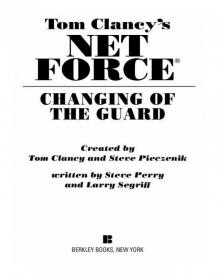 Changing of the Guard
Changing of the Guard Clear and Present Danger
Clear and Present Danger Hounds of Rome
Hounds of Rome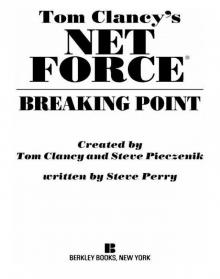 Breaking Point
Breaking Point Tom Clancy's Jack Ryan Books 7-12
Tom Clancy's Jack Ryan Books 7-12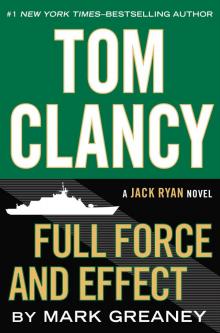 Full Force and Effect
Full Force and Effect The Archimedes Effect
The Archimedes Effect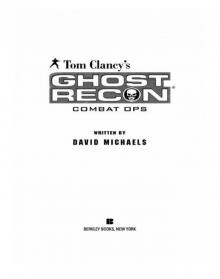 Combat Ops
Combat Ops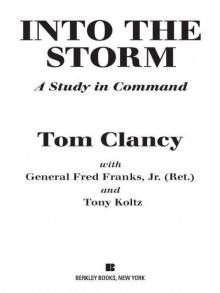 Into the Storm: On the Ground in Iraq
Into the Storm: On the Ground in Iraq Under Fire
Under Fire Point of Impact
Point of Impact Red Rabbit
Red Rabbit Rainbow Six
Rainbow Six The Hunt for Red October
The Hunt for Red October The Teeth of the Tiger
The Teeth of the Tiger Conviction (2009)
Conviction (2009)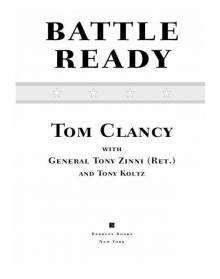 Battle Ready
Battle Ready Patriot Games
Patriot Games The Sum of All Fears
The Sum of All Fears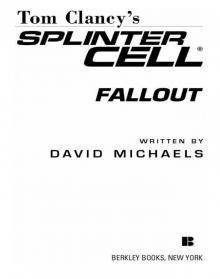 Fallout (2007)
Fallout (2007) Red Storm Rising
Red Storm Rising The Cardinal of the Kremlin
The Cardinal of the Kremlin Executive Orders
Executive Orders Lincoln, the unknown
Lincoln, the unknown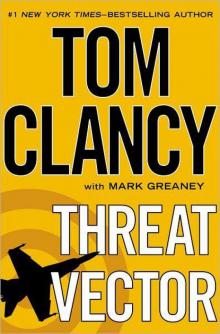 Threat Vector
Threat Vector The Hunted
The Hunted Shadow Warriors: Inside the Special Forces
Shadow Warriors: Inside the Special Forces End Game
End Game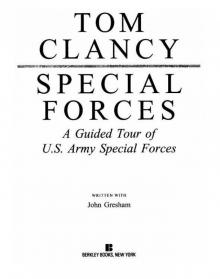 Special Forces: A Guided Tour of U.S. Army Special Forces
Special Forces: A Guided Tour of U.S. Army Special Forces Locked On
Locked On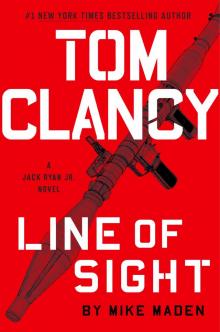 Line of Sight
Line of Sight Tom Clancy Enemy Contact - Mike Maden
Tom Clancy Enemy Contact - Mike Maden Fighter Wing: A Guided Tour of an Air Force Combat Wing
Fighter Wing: A Guided Tour of an Air Force Combat Wing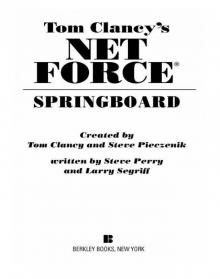 Springboard
Springboard Line of Sight - Mike Maden
Line of Sight - Mike Maden EndWar
EndWar Dead or Alive
Dead or Alive Tom Clancy Support and Defend
Tom Clancy Support and Defend Checkmate
Checkmate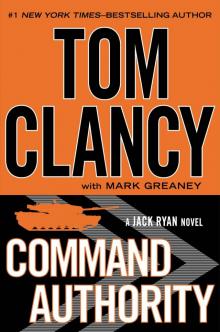 Command Authority
Command Authority Carrier: A Guided Tour of an Aircraft Carrier
Carrier: A Guided Tour of an Aircraft Carrier Blacklist Aftermath
Blacklist Aftermath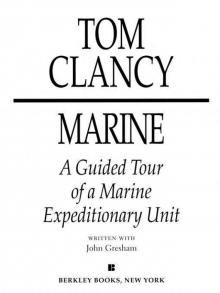 Marine: A Guided Tour of a Marine Expeditionary Unit
Marine: A Guided Tour of a Marine Expeditionary Unit Commander-In-Chief
Commander-In-Chief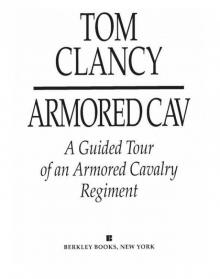 Armored Cav: A Guided Tour of an Armored Cavalry Regiment
Armored Cav: A Guided Tour of an Armored Cavalry Regiment Tom Clancy's Jack Ryan Books 1-6
Tom Clancy's Jack Ryan Books 1-6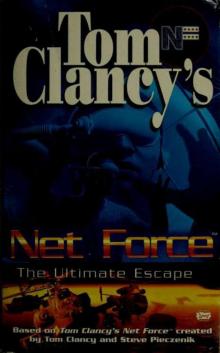 The Ultimate Escape
The Ultimate Escape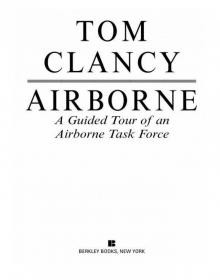 Airborne: A Guided Tour of an Airborne Task Force
Airborne: A Guided Tour of an Airborne Task Force Debt of Honor
Debt of Honor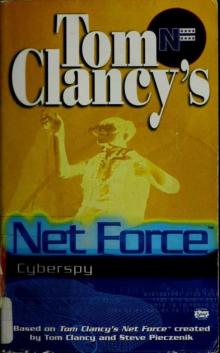 Cyberspy
Cyberspy Point of Contact
Point of Contact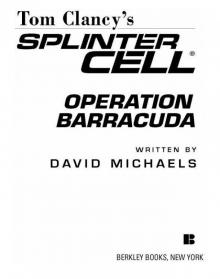 Operation Barracuda (2005)
Operation Barracuda (2005)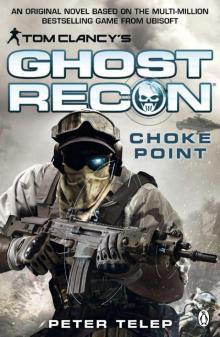 Choke Point
Choke Point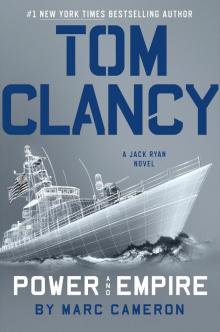 Power and Empire
Power and Empire Every Man a Tiger: The Gulf War Air Campaign
Every Man a Tiger: The Gulf War Air Campaign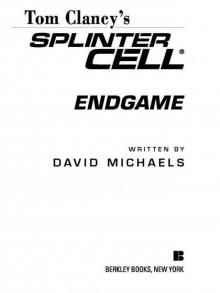 Endgame (1998)
Endgame (1998)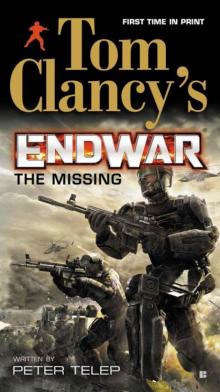 EndWar: The Missing
EndWar: The Missing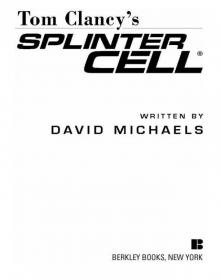 Splinter Cell (2004)
Splinter Cell (2004) The Great Race
The Great Race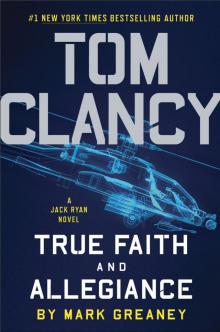 True Faith and Allegiance
True Faith and Allegiance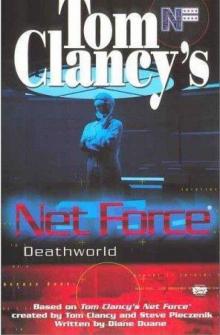 Deathworld
Deathworld Ghost Recon (2008)
Ghost Recon (2008)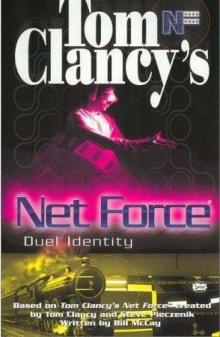 Duel Identity
Duel Identity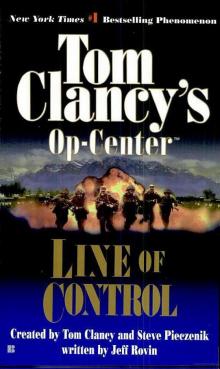 Line of Control o-8
Line of Control o-8 The Hunt for Red October jr-3
The Hunt for Red October jr-3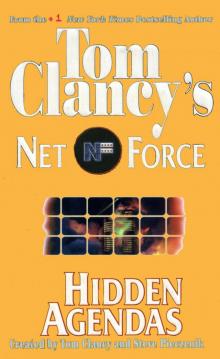 Hidden Agendas nf-2
Hidden Agendas nf-2 Acts of War oc-4
Acts of War oc-4 Ruthless.Com pp-2
Ruthless.Com pp-2 Night Moves
Night Moves The Hounds of Rome - Mystery of a Fugitive Priest
The Hounds of Rome - Mystery of a Fugitive Priest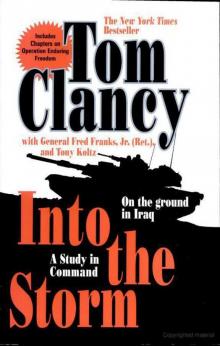 Into the Storm: On the Ground in Iraq sic-1
Into the Storm: On the Ground in Iraq sic-1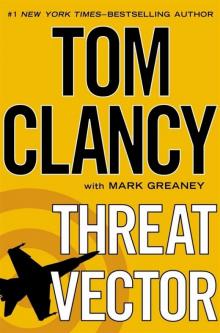 Threat Vector jrj-4
Threat Vector jrj-4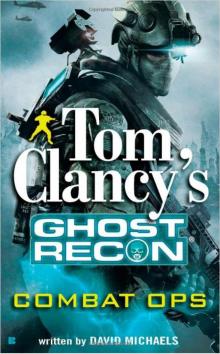 Combat Ops gr-2
Combat Ops gr-2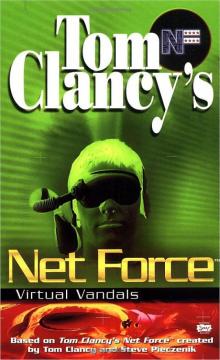 Virtual Vandals nfe-1
Virtual Vandals nfe-1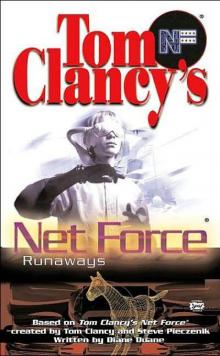 Runaways nfe-16
Runaways nfe-16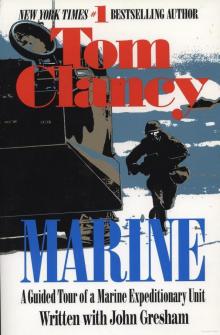 Marine: A Guided Tour of a Marine Expeditionary Unit tcml-4
Marine: A Guided Tour of a Marine Expeditionary Unit tcml-4 Shadow Warriors: Inside the Special Forces sic-3
Shadow Warriors: Inside the Special Forces sic-3 Jack Ryan Books 1-6
Jack Ryan Books 1-6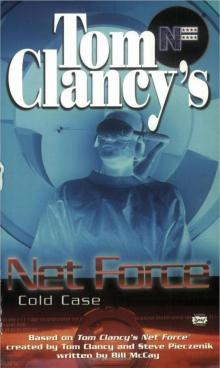 Cold Case nfe-15
Cold Case nfe-15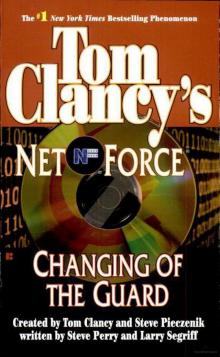 Changing of the Guard nf-8
Changing of the Guard nf-8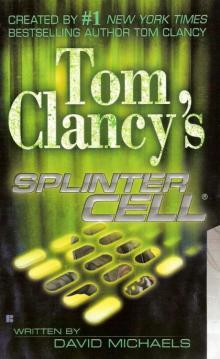 Splinter Cell sc-1
Splinter Cell sc-1 Battle Ready sic-4
Battle Ready sic-4 The Bear and the Dragon jrao-11
The Bear and the Dragon jrao-11 Fighter Wing: A Guided Tour of an Air Force Combat Wing tcml-3
Fighter Wing: A Guided Tour of an Air Force Combat Wing tcml-3 Patriot Games jr-1
Patriot Games jr-1 Jack Ryan Books 7-12
Jack Ryan Books 7-12 Mission of Honor o-9
Mission of Honor o-9 Private Lives nfe-9
Private Lives nfe-9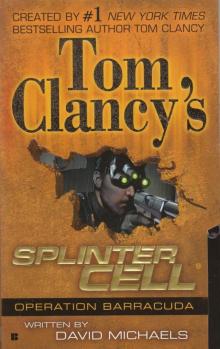 Operation Barracuda sc-2
Operation Barracuda sc-2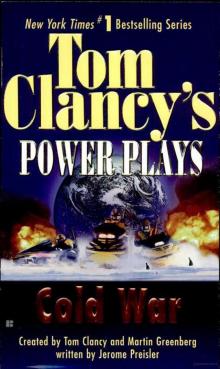 Cold War pp-5
Cold War pp-5 Point of Impact nf-5
Point of Impact nf-5 Red Rabbit jr-9
Red Rabbit jr-9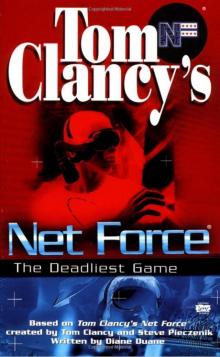 The Deadliest Game nfe-2
The Deadliest Game nfe-2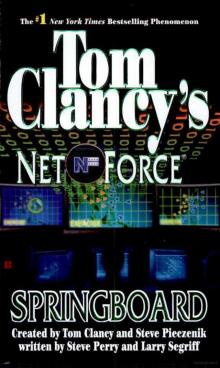 Springboard nf-9
Springboard nf-9 Safe House nfe-10
Safe House nfe-10 EndWar e-1
EndWar e-1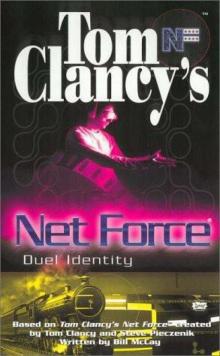 Duel Identity nfe-12
Duel Identity nfe-12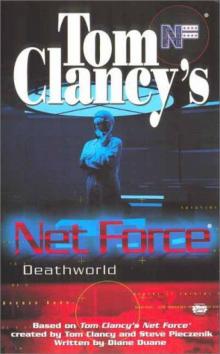 Deathworld nfe-13
Deathworld nfe-13 Politika pp-1
Politika pp-1 Rainbow Six jr-9
Rainbow Six jr-9 Tom Clancy's Power Plays 1 - 4
Tom Clancy's Power Plays 1 - 4 Endgame sc-6
Endgame sc-6 Executive Orders jr-7
Executive Orders jr-7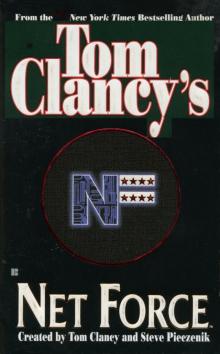 Net Force nf-1
Net Force nf-1 Call to Treason o-11
Call to Treason o-11 Locked On jrj-3
Locked On jrj-3 Against All Enemies
Against All Enemies The Sum of All Fears jr-7
The Sum of All Fears jr-7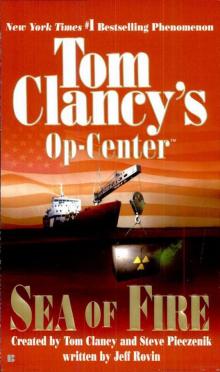 Sea of Fire o-10
Sea of Fire o-10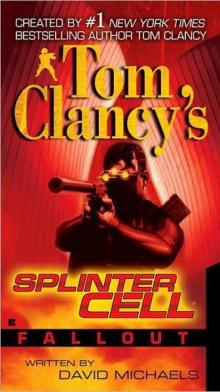 Fallout sc-4
Fallout sc-4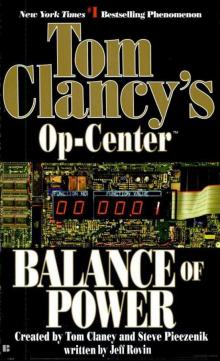 Balance of Power o-5
Balance of Power o-5 Shadow Watch pp-3
Shadow Watch pp-3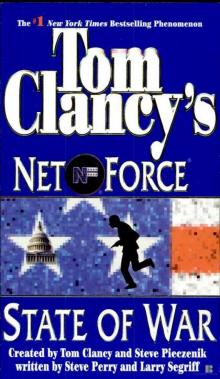 State of War nf-7
State of War nf-7 Wild Card pp-8
Wild Card pp-8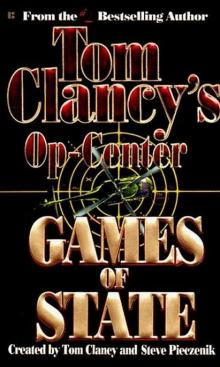 Games of State o-3
Games of State o-3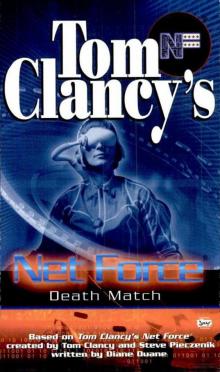 Death Match nfe-18
Death Match nfe-18 Against All Enemies mm-1
Against All Enemies mm-1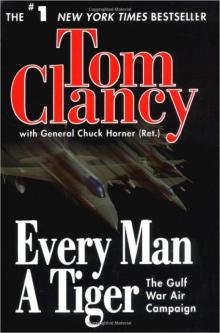 Every Man a Tiger: The Gulf War Air Campaign sic-2
Every Man a Tiger: The Gulf War Air Campaign sic-2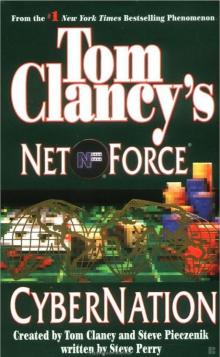 Cybernation nf-6
Cybernation nf-6 Support and Defend
Support and Defend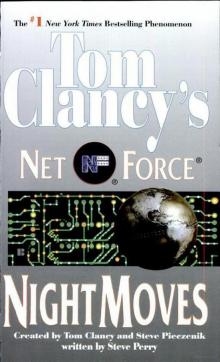 Night Moves nf-3
Night Moves nf-3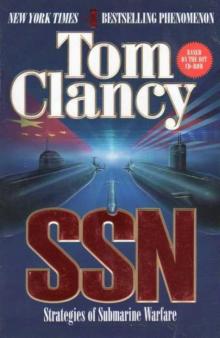 SSN
SSN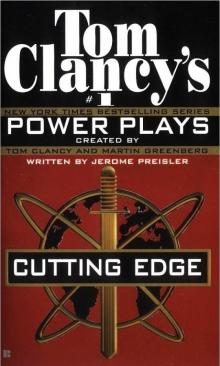 Cutting Edge pp-6
Cutting Edge pp-6 The Cardinal of the Kremlin jrao-5
The Cardinal of the Kremlin jrao-5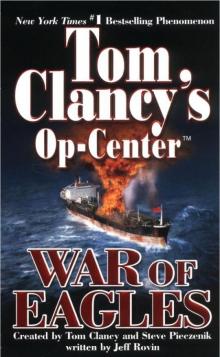 War of Eagles o-12
War of Eagles o-12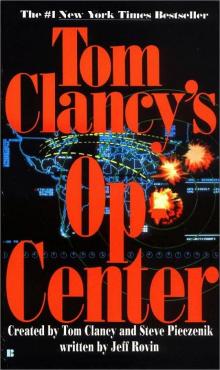 Op-Center o-1
Op-Center o-1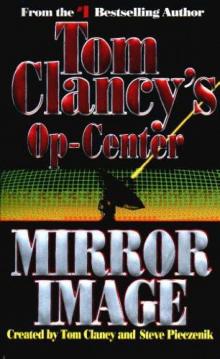 Mirror Image o-2
Mirror Image o-2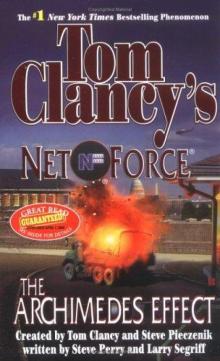 The Archimedes Effect nf-10
The Archimedes Effect nf-10 Teeth of the Tiger jrj-1
Teeth of the Tiger jrj-1 Bio-Strike pp-4
Bio-Strike pp-4 State of Siege o-6
State of Siege o-6 Debt of Honor jr-6
Debt of Honor jr-6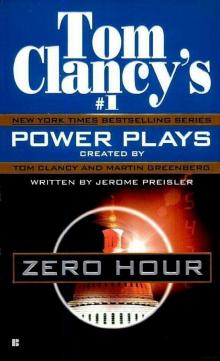 Zero Hour pp-7
Zero Hour pp-7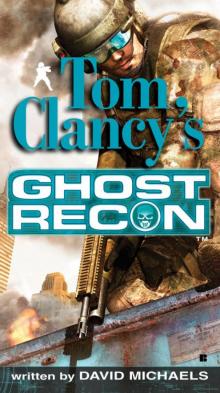 Ghost Recon gr-1
Ghost Recon gr-1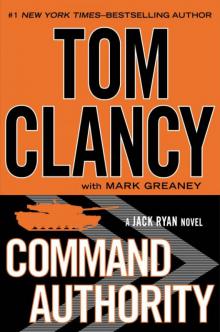 Command Authority jr-10
Command Authority jr-10 Tom Clancy's Power Plays 5 - 8
Tom Clancy's Power Plays 5 - 8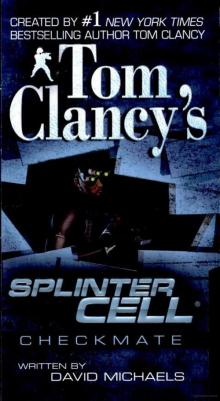 Checkmate sc-3
Checkmate sc-3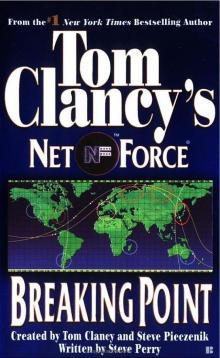 Breaking Point nf-4
Breaking Point nf-4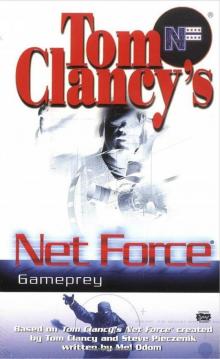 Gameprey nfe-11
Gameprey nfe-11 The Hunted e-2
The Hunted e-2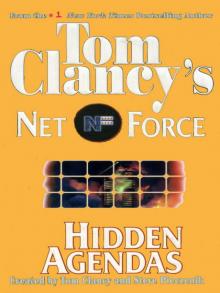 Hidden Agendas
Hidden Agendas Divide and Conquer o-7
Divide and Conquer o-7